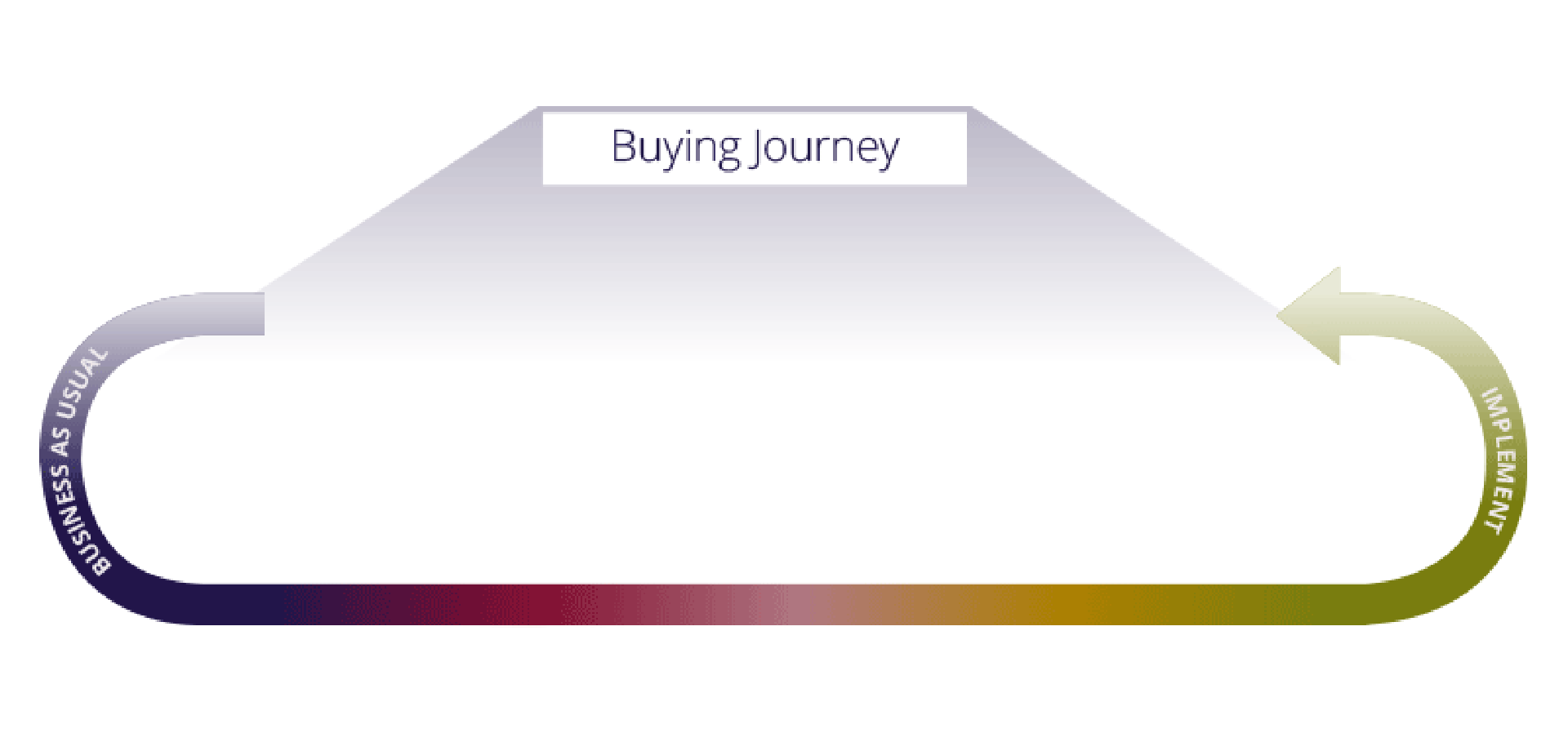The New Buyer Journey
Customer conversations

Effectively Engage Customers throughout The New Buyer Journey
The new buyer's journey is not linear. Therefore, winning the sale is no longer characterized by a logical progression. The new buyer journey is dynamic and iterative.
Throughout the new buyer journey movement starts and stops and sometimes even reverses. Timelines become obscure, and parameters change shape. This life sized game of Chutes and Ladders is the new reality for sales professionals today.
Truly understanding the buyer's journey means embracing the turns in the path. Sales professionals must acknowledge that success comes from a dynamic approach to selling.
Many sales professionals see the effects of a changing buyer’s journey. Few become proactive in their drive to change with them.
It’s not enough to observe that buying has become more complicated. Sales professionals must make the moves necessary to lead the customer and help them navigate the journey.
The Stages in The New Buyer's Journey
The stages within the modern buying journey should look familiar to most sales professionals. Explore, investigate, evaluate, confirm, negotiate, and commit are all part of the journey.
It’s important to look at the dynamic nature of what happens in each phase because this is where the fundamental shift is occurring. At Richardson Sales Performance, our research has shown a fundamental shift in what happens in each phase.

There is a constant process of integration, refinement, and alignment.
Integration
The customer continues to learn and integrate additional information into their thinking and integrate new stakeholders into the process as their priorities sharpen.
Refinement
Integration of information and people causes the customer to refine their thinking around the decision to buy or not buy as they gain clarity on the issue and outcomes.
They gain visibility into the best solution, increase confidence in economic value and ease of acquisition, and consider fears and concerns over risk.
Alignment
Finally, with their refined thinking and perhaps change in scope and priorities, they must align and realign stakeholders in various emotional states with a variety of needs.
These changes mean that the customer is doing more to:
- Understand the solution’s risk/reward profile
- Measure one provider against another
- Involve all stakeholders to gauge consensus
- Leverage the competition between providers as a negotiation tool
- Continually measure the solution’s ROI

Sales Process Optimization
Optimize your sales process by anchoring to verifiable outcomes and discover a proven path to improved sales team performance.
Learn MoreImpact of the New Buying Journey on Sales Professionals
The challenge for sales professionals today is that this dynamic buying process doesn’t happen once in the buyer’s journey — it’s continuous. And, often, it goes on behind the scenes, hidden from view.
What they see from the customer is conflicting messages, changes in scope, stakeholders seemingly coming out of the woodwork, or worst of all — silence.
Sales professionals can take a proactive approach to respond to changes in the buyer's journey by:
- Getting involved in the "hidden" dialogue: The sales professional’s dialogue with a stakeholder doesn’t always represent the buyers’ complete perspective. These outward conversations might contrast the hidden conversations among all other stakeholders behind closed doors. Sales professionals must be aware that these separate, buyer side conversations are unfolding. They must also be proactive and seek inclusion into these dialogues. As customers work through the iterations of the process, sales professionals need a way to guide their thinking. Doing so helps drive the consensus building process.
- Driving the customer's momentum: Slowed momentum kills deals. Sales professionals need to help the customer move forward without coming across as pushy or self-serving. Therefore, they must understand the decision-making process within the organization. They must do everything possible to support the customer in moving through their decision process. Sales professionals can maintain momentum by underscoring the solution’s value and the effectiveness other businesses have seen with implementation. Drive the customer’s resolve by articulating the opportunity costs associated with the status quo. Instilling a sense of urgency requires the sales professional to understand the differing motivators driving each decision maker.
- Becoming more agile: The customer will have more questions as their conception of the business challenge changes. Sales professionals need to be ready to address these questions immediately. Customers will view the sales professional’s agility as an early indicator of the ongoing relationship. If the sales professional is prepared to respond to questions and concerns clearly, quickly, and accurately, then the customer will have a greater conviction to buy. Agile responses not only satisfy the short-term question, they also satisfy the customer’s questions about the longer-term relationship. The sales professional’s agility, especially in early stages, lays the groundwork for becoming a trusted advisor. This status is increasingly important as business needs and the corresponding solutions become more complicated.
Success comes from effectively shaping the customer’s thinking. To do so, sales professionals need to know the customer’s next step before they do. Therefore, the best strategy is to understand these influences, anticipate them, and add value by guiding your customer through the new journey.
Contact us to learn how we can train your sales professionals on the new buyer's journey and how to bring more leads through the process.

Brief: Enabling Sales Teams Through the New Buyer's Journey
DownloadGet industry insights and stay up to date, subscribe to our newsletter.
Joining our community gives you access to weekly thought leadership to help guide your planning for a training initiative, inform your sales strategy, and most importantly, improve your team's performance.






